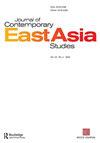People’s will or the central government’s plan? The shape of contemporary Chinese local governance
IF 1.4
Q1 AREA STUDIES
引用次数: 1
Abstract
ABSTRACT In the wake of 18th and 19th CPC Central Committees’ reforms on “social governance,” this paper will explore subsequent developments in local governance in China. This is an appropriate focus because earlier research has largely tended to overlook the different ways that local governments behave in balancing the requirements of upper-level, national government with the needs and will of society. By using interviews and participant observation to examine the case of Xicheng District Beijing, this paper finds that, when local government faces pressure from central government, it tends to downplay consideration of the people’s voice and instead it uses monetary compensation to appease people’s anger at not being listened to. However, when local government is afforded more freedom, it is more likely to try and address people’s needs and demands and reconcile these with central government’s plan, so as to balance the needs of the two. The analysis of the post-2012 reforms identifies three Project Types to illustrate different approaches to local governance. Owing to government’s dominant role, Types One and Two are more akin to what empowerment theory dubs “collaborative betterment.” In contrast, Type Three projects give local communities far greater say in determining policy priorities and implementation methods. For this reason, they broadly resonate with the notion of “collaborative empowerment,” although ultimately government remains a veto-player. A further key finding is that local governance is not only shaped by the central government’s plan, nor the demands of society, but to a significant degree, by the mediating role of local government officials.人民的意愿还是中央政府的计划?当代中国地方治理的形态
摘要随着党的十八届和十九届中央关于“社会治理”的改革,本文将探讨中国地方治理的后续发展。这是一个适当的重点,因为早期的研究在很大程度上倾向于忽视地方政府在平衡上层国家政府的要求与社会需求和意愿方面的不同行为方式。本文以北京西城区为例,通过访谈和参与者观察发现,当地方政府面临中央政府的压力时,它往往会淡化对人民呼声的考虑,而是用金钱补偿来平息人们对不被倾听的愤怒,它更有可能尝试解决人民的需求和要求,并将其与中央政府的计划相协调,以平衡两者的需求。对2012年后改革的分析确定了三种项目类型,以说明地方治理的不同方法。由于政府的主导作用,第一类和第二类项目更类似于赋权理论所称的“合作改善”。相比之下,第三类项目让当地社区在确定政策优先事项和实施方法方面有更大的发言权。出于这个原因,他们与“合作赋权”的概念产生了广泛的共鸣,尽管最终政府仍然是否决者。另一个关键发现是,地方治理不仅由中央政府的计划或社会需求决定,而且在很大程度上由地方政府官员的调解作用决定。
本文章由计算机程序翻译,如有差异,请以英文原文为准。
求助全文
约1分钟内获得全文
求助全文
来源期刊

Journal of Contemporary East Asia Studies
Social Sciences-Cultural Studies
CiteScore
2.50
自引率
0.00%
发文量
10
审稿时长
6 weeks
 求助内容:
求助内容: 应助结果提醒方式:
应助结果提醒方式:


